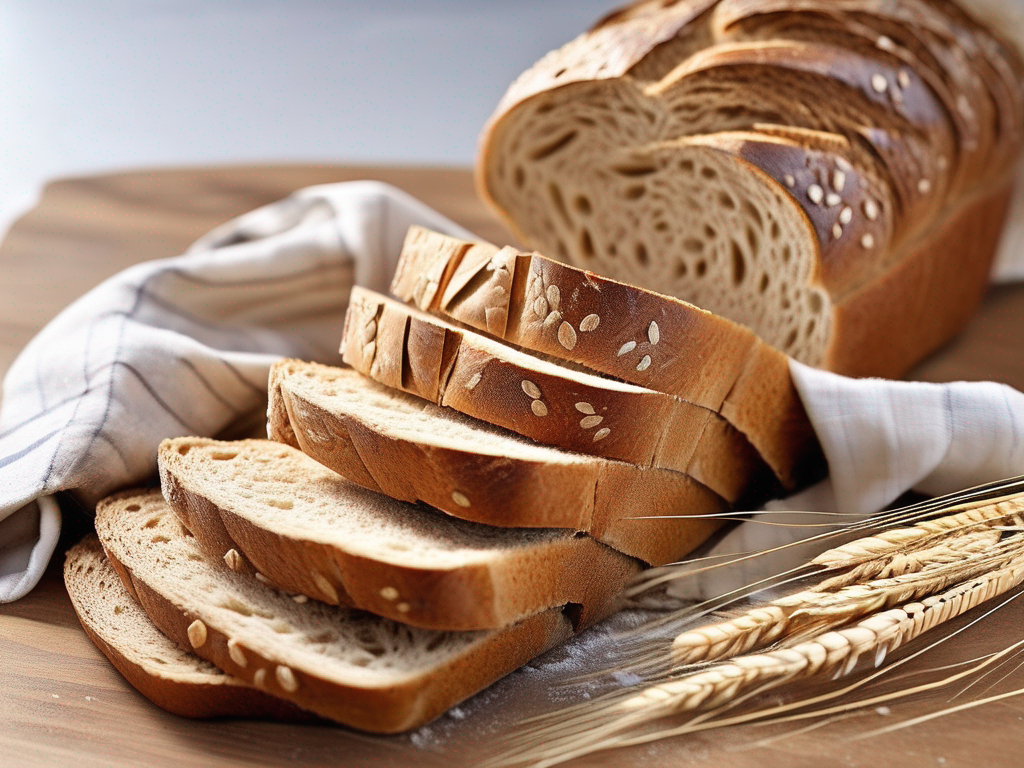
How to Extend the Shelf Life of Whole Wheat Sliced Bread in Humid Climates
Get Your Free Food Safety Cheat Sheet
30 most common foods with instant answers. Print it and stick it on your fridge—completely free!
How to Extend the Shelf Life of Whole Wheat Sliced Bread in Humid Climates
Humid climates can pose a challenge when it comes to food storage, especially for perishable items like bread. Whole wheat sliced bread, in particular, is prone to mold growth and staleness in humid conditions. However, with the right storage techniques and precautions, you can extend the shelf life of your bread and enjoy it fresh for longer. In this guide, we will explore effective strategies to keep your whole wheat sliced bread fresh and safe to eat in humid climates. (Bread whole wheat sliced opened)
Understanding the Impact of Humidity on Bread
Humidity can accelerate the growth of mold and bacteria on bread, leading to spoilage and potential health risks. In humid climates, the moisture in the air can seep into the bread, making it soggy and promoting mold growth. Additionally, high humidity levels can cause bread to become stale more quickly.
Effects of Mold on Bread
Mold not only affects the taste and texture of bread but can also produce harmful toxins that can cause food poisoning. It's essential to discard any bread that shows signs of mold growth to prevent the risk of consuming contaminated food.
Proper Storage Techniques for Whole Wheat Sliced Bread
To preserve the freshness and quality of whole wheat sliced bread in humid climates, follow these storage tips:
- Store in a Cool, Dry Place: Keep your bread in a cool, dry area away from direct sunlight and heat sources.
- Use Airtight Containers: Transfer the sliced bread into airtight containers or resealable bags to protect it from moisture and air exposure.
- Avoid Refrigeration: Refrigeration can accelerate staling and promote moisture absorption in bread. It's best to store bread at room temperature.
- Freeze Extra Slices: If you won't be consuming the bread within a few days, consider freezing individual slices in a freezer-safe bag.
- Rotate Stock: Consume older slices first and rotate your bread stock to ensure freshness.
Benefits of Airtight Containers
Using airtight containers or bags helps create a barrier against moisture and air, preserving the texture and flavor of the bread. It also prevents contamination from other foods in the storage area.
Tips for Reviving Stale Bread
If your whole wheat sliced bread has become stale due to humidity, you can try these methods to revive its freshness:
- Toast: Toasting bread can help restore its crispness and enhance its flavor.
- Microwave: Sprinkle a bit of water on the bread and microwave it for a few seconds to add moisture back.
- Make Croutons or Bread Crumbs: Repurpose stale bread by turning it into croutons or breadcrumbs for salads and recipes.
Safety Precautions for Bread Storage
Ensuring the safety of your bread is crucial to prevent foodborne illnesses. Follow these safety precautions when storing whole wheat sliced bread:
- Check for Mold: Inspect your bread regularly for any signs of mold growth, including discoloration and fuzzy spots.
- Practice Proper Hygiene: Wash your hands before handling bread to prevent contamination.
- Avoid Cross-Contamination: Store bread away from raw meat, poultry, and seafood to prevent cross-contamination.
Conclusion
By following these storage techniques and safety precautions, you can prolong the shelf life of your whole wheat sliced bread in humid climates. Remember to keep your bread in a cool, dry place, use airtight containers, and avoid refrigeration to maintain its freshness. Additionally, be mindful of safety practices to ensure that your bread is safe to consume. With these tips, you can enjoy delicious and fresh whole wheat sliced bread for longer periods, even in humid conditions. (Bread whole wheat sliced opened)
Authoritative Food Safety References
These agencies and university labs inform every tip and health precaution we publish.
USDA FoodKeeper – Cold Storage Guidelines
Official refrigerator, freezer, and pantry timelines maintained by the U.S. Department of Agriculture.
Visit USDA FoodKeeperFDA Produce Safety Rule & Grower Guidance
Field-to-fridge handling practices that prevent contamination of fruits, vegetables, and leafy greens.
Visit FDA Produce SafetyCDC Foodborne Illness Prevention Hub
Surveillance-backed guidance on pathogens, symptoms, and steps to reduce foodborne illness risk.
Visit CDC Food SafetyUC Davis Postharvest Technology Center
University research detailing optimal storage atmospheres for produce after harvest.
Visit UC Davis PostharvestPenn State Extension – Home Food Preservation & Safety
Peer-reviewed extension bulletins on safe canning, chilling, and reheating practices.
Visit Penn State ExtensionGet Your Free Food Safety Cheat Sheet
30 most common foods with instant answers. Print it and stick it on your fridge—completely free! Want more? Upgrade to the complete guide with 70+ foods.
Scan your food directly and get instant safety info using our AI-powered camera feature.